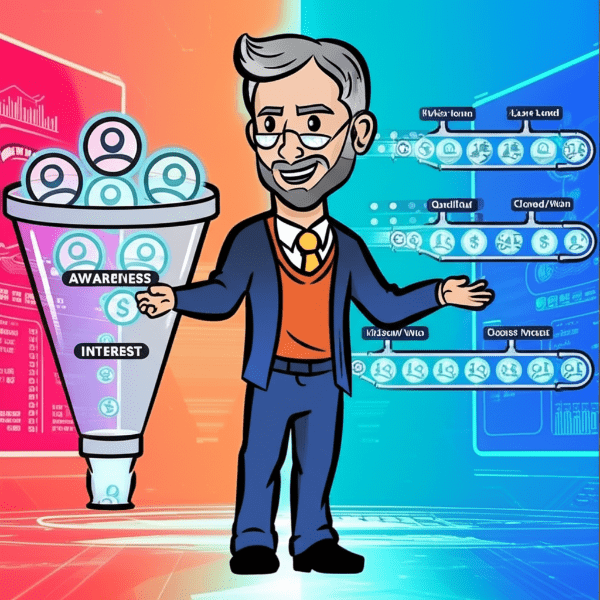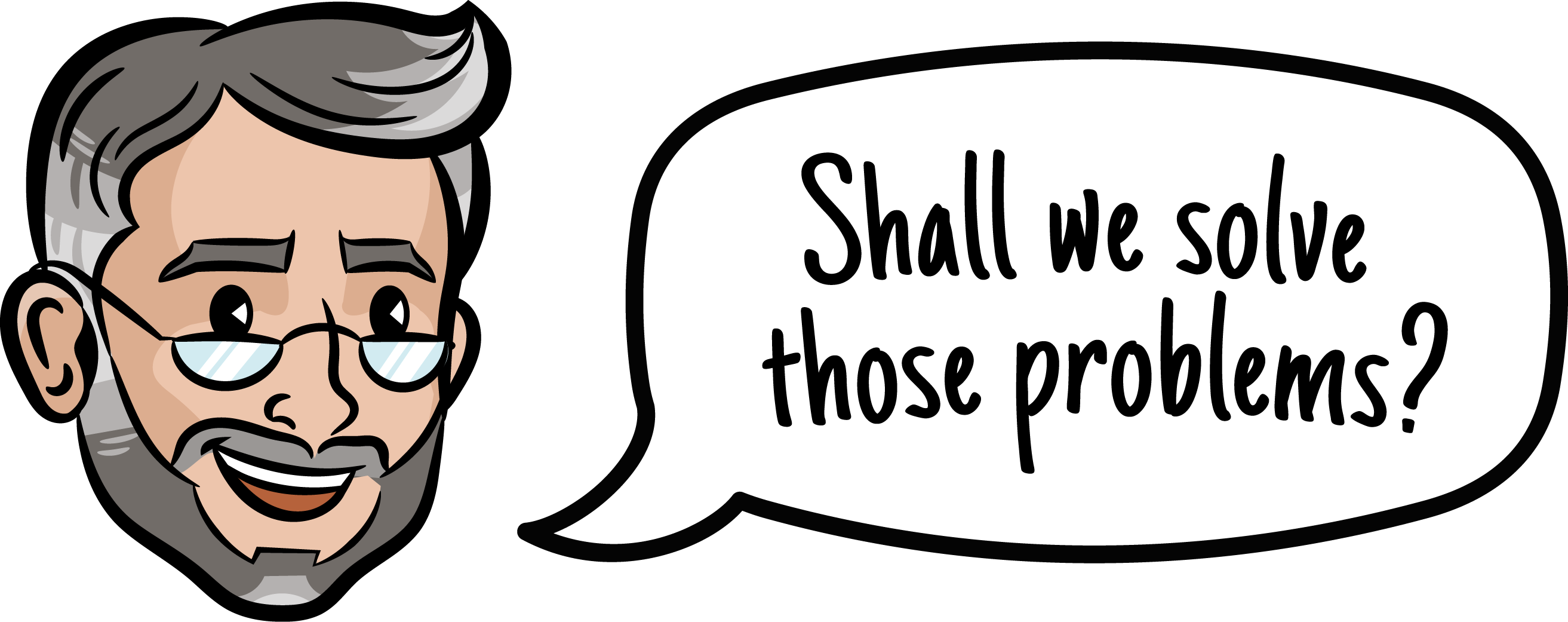Table of Contents
The Sales Funnel: Understanding the Customer’s Journey
The Sales Pipeline: Navigating the Internal Sales Process
Sales Funnel vs. Sales Pipeline: Key Distinctions Analyzed
Why This Distinction is Crucial for Sales & Marketing Leaders
Practical Applications and Integration in Practice
Conclusion: Mastering Both for Growth
Useful Related Posts from Sales Funnel Professor
Understanding the sales funnel vs pipeline is critical for any sales or marketing leader striving to drive predictable growth. These two concepts are often used interchangeably, but failing to distinguish between them can lead to misaligned strategies, poor reporting, and missed revenue opportunities. This article clarifies the differences between the sales funnel and the sales pipeline—what each represents, why they matter, and how to use them together for effective sales and marketing alignment.
When leaders understand these core frameworks, team metrics become meaningful, cross-functional conversations improve, and decisions are grounded in the right data. Let’s define these concepts clearly to better navigate the revenue journey ahead.
The Sales Funnel: Understanding the Customer’s Journey
The sales funnel, fundamentally, is a representation of the customer’s journey from initial awareness of a problem or your brand to the point of purchase. Its structure, wide at the top and narrow at the bottom, visually depicts the decreasing number of potential customers as they move through the stages of consideration and decision-making.

When we discuss the sales funnel vs pipeline, the funnel offers a bird’s-eye view. It focuses on the aggregate flow of potential customers, analyzing volume and conversion rates at different points along the path to becoming a buyer. It’s a conceptual framework primarily used to understand market dynamics, analyze overall lead generation effectiveness, and identify where potential customers might be dropping off before engaging directly with the sales team. It represents the demand generation and nurturing process in a broad sense.
The sales funnel’s focus is inherently customer-centric. It tracks the potential buyer’s progression through various states of mind and engagement levels with your company and its offerings.
Typical Stages of the Sales Funnel
While terms may vary, most sales funnels follow the buyer’s journey through four key stages:
- Awareness
- Potential customers realize a problem or need—and that solutions like yours exist.
- They engage with educational content, ads, or search results.
- Key metrics: Reach, impressions, website visits, content downloads, form fills.
- Interest / Consideration
- Prospects actively research and compare solutions.
- They consume webinars, case studies, and detailed guides.
- Key metrics: Engagement rates, demo requests, content interactions, MQLs.
- Decision
- Buyers narrow their choices and evaluate top options.
- They seek pricing, proposals, social proof, or implementation details.
- Marketing hands off to sales, generating SQLs or opportunities.
- Key metric: Sales Qualified Leads (SQLs).
- Action (Purchase)
- The final decision is made; the prospect becomes a customer.
- Sales focuses on closing and onboarding.
- Key metrics: Conversion rates, customer acquisition volume.
The sales funnel is largely driven by marketing, especially in early and mid-stages. Funnel analysis helps improve lead quality, campaign effectiveness, and customer journey flow.
By tracking key metrics like stage-to-stage conversion rates, CPL, and CAC, teams can identify bottlenecks, optimize messaging, and boost funnel efficiency. A drop in conversions from Awareness to Interest, for example, may signal weak targeting or content misalignment.
Understanding and measuring each stage helps align teams, improve performance, and fuel predictable growth.
The Sales Pipeline: Navigating the Internal Sales Process
In contrast to the customer-centric view of the funnel, the sales pipeline provides an internal, sales-centric perspective. It represents the series of steps or sales pipeline stages that a sales team follows to move a qualified opportunity from initial contact to a closed deal (won or lost).
Think of the sales pipeline as the sales team’s workflow. It is a dynamic system where individual deals, represented as opportunities, progress through a defined sequence of activities and milestones managed by the sales representatives. The focus here is on managing specific potential transactions, assessing their likelihood of closing, and executing the sales activities necessary to advance them.

The sales pipeline is inherently about opportunity management. It provides visibility into the status of each potential deal, the actions required next, the potential revenue it represents, and its estimated closing date.
Standard Sales Pipeline Stages
Sales pipeline stages reflect the actions your team takes to move qualified opportunities toward a deal. Here’s a simplified breakdown:
- Lead Qualification
- Sales evaluates if a lead (usually an SQL) meets your ICP and buying criteria.
- Tools like BANT or MEDDIC help assess budget, authority, need, and timeline.
- Only qualified leads enter the pipeline.
- Prospecting / Initial Contact
- Reps reach out via calls, emails, or social to introduce themselves and set up discovery calls.
- Needs Analysis / Discovery
- Sales explores the prospect’s goals, pain points, and buying motivations.
- This builds rapport and lays the groundwork for a tailored solution.
- Proposal / Presentation
- Reps deliver customized proposals highlighting how your offer meets the client’s needs.
- Pricing, features, and benefits are clearly outlined.
- Negotiation
- Discussions focus on pricing, terms, scope, and final concerns.
- Strong communication is essential to move toward agreement.
- Closing / Commitment
- The deal is won (signed contract) or lost.
- Sales finalizes paperwork and prepares for handoff or onboarding.
The sales pipeline is a tool for opportunity management, revenue forecasting, and performance tracking.
Key pipeline metrics include:
- Total pipeline value
- Sales velocity (how fast deals move)
- Win rate
- Average deal size
- Time spent in each stage
These insights help leaders identify bottlenecks, coach reps, and forecast more accurately.
Sales Funnel vs. Sales Pipeline: Key Distinctions Analyzed
Understanding the fundamental differences between the sales funnel and the sales pipeline is paramount for sales and marketing leaders. While they represent sequential phases in bringing a customer onboard, their perspectives, scope, and purpose are distinctly different. Confusing them leads to miscommunication, inaccurate analysis, and flawed strategic planning.

Fundamental Differences in Perspective and Focus
The key distinction between the sales funnel and sales pipeline lies in perspective, scope, and purpose:
- Perspective:
- The sales funnel reflects the customer’s journey—an external view showing how prospects move from awareness to decision.
- The sales pipeline reflects the internal sales process—tracking how the sales team progresses specific deals toward closing.
- Scope:
- The funnel looks at lead volume and stage-to-stage flow across a broad audience. It’s aggregate and market-focused.
- The pipeline tracks individual opportunities, each with its own value and timeline. It’s deal-specific and execution-focused.
- Purpose:
- The funnel is used to improve lead generation and conversion—identifying where prospects drop off before becoming sales-ready.
- The pipeline is about managing and closing deals—ensuring qualified opportunities advance toward revenue.
Example:
- A marketing leader sees drop-off from Interest to Decision in the funnel. That’s a funnel issue—likely messaging, calls to action, or nurturing.
- A sales leader sees deals stalling in Negotiation. That’s a pipeline issue—perhaps pricing, competitive objections, or rep performance.
Understanding this difference allows leaders to diagnose issues correctly and take targeted action—whether to boost engagement at the top or improve deal closure at the bottom.
Contrasting Stages and Flow
The stages within each concept also differ significantly:
- Funnel stages reflect the buyer’s mindset: Awareness, Interest, Decision. These are states of being or understanding for the potential customer.
- Pipeline stages reflect sales activities: Qualification, Prospecting, Needs Analysis, Proposal, Negotiation, Closing. These are actions and milestones performed by the sales team.
While the funnel flow is typically depicted as linear (though prospects can sometimes skip or jump stages), the pipeline flow of an individual opportunity is more dynamic. While the ideal is linear progression, opportunities can sometimes move backward (e.g., from Proposal back to Needs Analysis if new information arises) or might not follow every single standard stage depending on the deal complexity. The pipeline is a structured process, but the movement within it is tied to the specific interactions and progress of individual deals, not just a general decrease in volume.
Different Metrics and Measurement Goals
Sales funnels and pipelines serve different purposes—and so do their metrics.
Funnel Metrics focus on lead flow and marketing efficiency:
- Conversion rates between stages (e.g., Website Visitor to Lead, MQL to SQL)
- Total lead volume and trends
- Stage-by-stage conversion counts
- Cost per lead (CPL)
- Traffic sources and their conversion effectiveness
- Overall funnel conversion rate (e.g., first touch to closed customer)
Pipeline Metrics focus on deal progression and sales performance:
- Total pipeline value (sum of open opportunities)
- Value by stage
- Sales velocity (time from opportunity creation to close)
- Win rate (percentage of deals won)
- Average deal size
- Stage-to-stage conversion rates
- Stage duration
- Lost deal analysis (where and why deals fall through)
These metrics serve different analytical levels. Funnel metrics assess lead generation scale and efficiency. Pipeline metrics measure how effectively sales converts those leads into revenue.
For example, a conversion rate in the funnel shows how well leads move from awareness to interest. In contrast, a win rate in the pipeline shows how well sales closes qualified deals. One tracks volume; the other tracks outcomes.
Visualizing these frameworks—funnels for customer journeys, pipelines for internal processes—helps align marketing and sales teams and makes data easier to interpret and act on.
Why This Distinction is Crucial for Sales & Marketing Leaders
For marketing and sales leaders aiming for predictable revenue growth, the clarity between the sales funnel and the sales pipeline is not just a matter of terminology; it’s a strategic imperative. Misunderstanding or conflating these concepts can lead to fundamental breakdowns in strategy, reporting, and team alignment.
Aligning Sales and Marketing Efforts
A clear distinction between the sales funnel and pipeline strengthens alignment between marketing and sales—two teams central to revenue growth but often operating with different KPIs.
Marketing owns the top of the funnel, focusing on attracting and nurturing leads through awareness and interest stages. Their goal is to deliver qualified leads (MQLs, then SQLs) to sales. Sales then manages those SQLs through the pipeline stages to conversion.
This clarity improves handover efficiency. When marketing understands what qualifies a lead for sales, and sales trusts the lead quality, collaboration improves. Miscommunication decreases, and each team focuses on where they add the most value.
Shared goals emerge more easily. Instead of marketing optimizing for lead volume alone and sales for win rates, both teams can track joint metrics like:
- MQL to SQL conversion rate (the funnel-pipeline bridge),
- Pipeline velocity (speed of opportunity progression),
- Revenue from marketing-sourced leads.
Without alignment, problems arise. Marketing might generate high lead volume, but if quality is low, sales can’t convert. Conversely, sales might have strong win rates but not enough opportunities if the funnel isn’t delivering.
Understanding the distinct roles of funnel vs. pipeline equips leaders to diagnose root issues—whether it’s weak lead qualification or a bottleneck in closing deals—and take coordinated action.
Enhancing Reporting and Forecasting Accuracy
The distinction is absolutely vital for accurate reporting and reliable sales forecasting. Using the correct metrics derived from the Clear distinction between the sales funnel and sales pipeline is crucial for accurate reporting and forecasting. Using the wrong metrics for the wrong model leads to flawed insights.
Funnel metrics (like lead conversion rates) apply to early-stage activity. Pipeline metrics (like opportunity conversion or win rate) reflect sales execution. Mixing them up—e.g., applying pipeline metrics to top-of-funnel campaigns—creates misleading conclusions.

Clear definitions help pinpoint problems:
- A drop in website-to-lead conversion is a funnel issue, often tied to messaging or targeting.
- Deals stalling in Negotiation or showing low win rates signal pipeline issues like poor pricing strategy or sales skill gaps.
Accurate forecasting depends on pipeline precision—not broad lead volume. Reliable forecasts use weighted probabilities tied to opportunity stages, sales velocity, and historical win rates. Without separating early-stage leads from late-stage deals, predictions become guesswork.
Example:
- Funnel Problem: High MQL volume, but a 30% drop from MQL to SQL. Likely a lead quality or nurturing issue.
- Pipeline Problem: SQLs are steady, but win rates from Proposal to Close drop 20%. Likely a sales performance or pricing issue.
These two issues demand different fixes—marketing optimization vs. sales enablement. Blending them risks applying the wrong solution.
Ultimately, defining funnel vs. pipeline enables better resource allocation, sharper diagnostics, and smarter CRM setup. Leaders can assign the right teams, tools, and strategies to the right problems—improving both efficiency and forecasting accuracy.
Practical Applications and Integration in Practice
Understanding the theoretical differences between the sales funnel and the sales pipeline is the first step. The next is effectively implementing this understanding in daily operations, particularly through technology and defined sales reporting metrics. Modern sales organizations leverage CRM systems and structured reporting to manage both views effectively.
Leveraging CRM Systems
Customer Relationship Management (CRM) systems are the primary tools for managing both the sales funnel and the sales pipeline in practice. Effective CRM configuration is essential to track the distinct concepts accurately.
- Setting up and tracking distinct Funnel stages (often linked to lead status) and Pipeline stages (linked to opportunity status) within the CRM. Leads typically flow through statuses like ‘New’, ‘Contacted’, ‘Engaged’, ‘MQL’, ‘SQL’. Once qualified, they are converted into Opportunities, which then move through distinct Pipeline stages like ‘Qualification’, ‘Needs Analysis’, ‘Proposal’, ‘Negotiation’, ‘Closed-Won/Lost’. The transition from SQL (Funnel) to Opportunity (Pipeline) is a critical point explicitly tracked in most CRMs.
- Generating reports based on both Funnel and Pipeline data. CRM platforms allow users to pull reports on lead conversion rates (Funnel) and separate reports on pipeline value, velocity, and win rates (Pipeline). Advanced systems can even provide dashboards that show the flow from the Funnel into the Pipeline.
- Enabling effective opportunity management. The pipeline view within a CRM allows sales reps and managers to see every active deal, its stage, value, next steps, and history. This level of detail is specific to the pipeline’s function and enables reps to manage their workload and managers to coach and forecast.
Using a CRM correctly ensures that the data collected reflects the reality of both the broad market engagement (funnel) and the specific deal progress (pipeline). This is fundamental to generating accurate sales reporting metrics.
Implementing Effective Sales Reporting Metrics
To manage revenue growth effectively, leaders need sales reporting metrics that capture both funnel health and pipeline performance.
Funnel Reporting Metrics track lead flow and conversion:
- Lead source contribution
- Website visitor-to-lead conversion
- MQL to SQL conversion rate (key handoff point)
- Lead quality (e.g., lead scores)
- Cost per lead (CPL) and cost per MQL
- Total funnel conversion rate (visitor to customer)
Pipeline Reporting Metrics focus on deal progress and outcomes:
- Total and segmented pipeline value (by stage, rep, product)
- Sales velocity (days from opportunity creation to close)
- Win rate (overall and by category)
- Average deal size
- Stage duration and drop-off points
- Stage-to-stage conversion rates
- Lost deal analysis (reasons, stages, competitors)
Combined Insights are where strategy sharpens. For example:
- Low pipeline value may point to poor lead quality in the funnel.
- Deals stalling in the pipeline may reflect weak discovery or qualification.
- High-quality leads from certain sources may correlate with faster sales velocity.
Aligning funnel and pipeline metrics helps leaders diagnose root causes—whether it’s a content issue, lead fit, sales execution, or pricing—and act with clarity.
Frameworks like BANT or MEDDIC support this process by providing consistent qualification standards. Their effectiveness shows up in metrics like stage duration, win rates, and velocity.
In short: a unified reporting system makes the entire revenue engine visible—and improvable.
Conclusion: Mastering Both for Growth
The seemingly simple distinction between the sales funnel and the sales pipeline carries profound implications for sales and marketing leadership. The sales funnel provides a macro, customer-centric view of the journey from awareness to becoming a sales-ready lead, focusing on volume and conversion rates of prospects. The sales pipeline offers a micro, internal view of managing individual qualified opportunities through the sales process to a closed deal, focusing on deal value, velocity, and win rates.
While often confused, understanding that the sales funnel represents stages of customer awareness and interest, while the sales pipeline represents the sales team’s process with specific deals, is a critical piece of knowledge for effective sales management and forecasting.

For marketing and sales leaders, this clarity is not merely about using the right jargon. It’s about accurately diagnosing challenges, aligning interdependent teams, building reliable forecasts, and ultimately, driving predictable revenue growth. Mastering both the concepts and the practical application of tracking them through appropriate systems and metrics is essential for navigating the complexities of modern revenue generation. Without this fundamental understanding, strategic decisions risk being based on flawed assumptions.
Learn how modern CRM/sales tools differentiate between funnel and pipeline views to gain clearer insights into your revenue process.
Useful Blogs from Sales Funnel Professor
- How Fintech Is Changing Sales & Marketing
Explore how fintech tools are reshaping customer acquisition, lead scoring, and automation. Ideal for teams looking to modernize and scale with smarter finance-tech alignment. - Revenue Operations Strategy: Aligning Sales, Marketing & CX
Learn how RevOps creates unified workflows, breaks silos, and boosts performance across the funnel. A must-read for growth-focused organizations. - Measuring Marketing ROI in 2025
Cut through vanity metrics. This guide walks you through calculating real ROI and tying marketing investments to business impact. - Marketing Vocabulary Guide for Strategic Leaders
Improve cross-team alignment with clear definitions of marketing terminology. Perfect for C-suite leaders, analysts, and team leads managing integrated campaigns. - NPS Meaning: What Is Net Promoter Score and How To Measure It
Understand the value of NPS as a loyalty and growth indicator. Learn how to calculate, interpret, and use it for strategic improvement.


